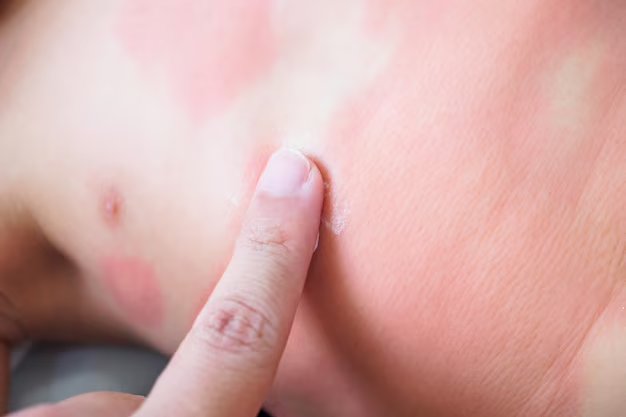Understanding Shingles: What They Look Like and More
Imagine waking up with an unexpected tingling sensation on your skin accompanied by a painful rash. This vivid scenario is what many people experience with shingles, a condition that can affect anyone who has a history of chickenpox. As you read on, we’ll explore everything you need to know about the appearance of shingles, related symptoms, and essential steps for dealing with this condition.
What Exactly Are Shingles?
Shingles, also known as herpes zoster, is a viral infection caused by the varicella-zoster virus—the same virus responsible for chickenpox. It primarily affects the nerve tissues and leads to a distinctive and often painful skin rash. After recovering from chickenpox, usually in childhood, the virus lies dormant in your nerve cells and can reactivate years later as shingles.
The Tell-Tale Signs of Shingles
Early Symptoms: What to Expect
Before the infamous rash makes its debut, shingles usually begins with early symptoms, which can easily be mistaken for other ailments:
- Burning or Tingling Sensation: Many people report a localized burning or tingling feeling even before any visible signs occur.
- Sensitivity or Itching: The affected area may become sensitive to touch and start to itch.
- Fever and Fatigue: Mild fever, headache, and fatigue often accompany the developing rash.
The Shingles Rash: A Visual Guide
Once early symptoms appear, the shingles rash typically follows. Here’s what to look for:
1. Rash Location:
- Often appears as a stripe of blisters that wraps around the side of your torso.
- Can also develop on one side of the face or neck.
- Rarely, it might appear on other parts like arms or legs.
2. Appearance of Blisters:
- The rash begins as small red patches.
- Within a few days, these patches evolve into fluid-filled blisters resembling chickenpox.
3. Blister Characteristics:
- Blisters tend to cluster in a concentrated band along the affected nerve path.
- They may bursts and eventually crust over, usually within 7-10 days.
4. Color Changes:
- Initially red, the rash may change color to yellow or brown as it heals.
Pain and Discomfort
Pain associated with shingles can vary greatly in intensity. Some people experience mild discomfort, while others suffer severe pain that interferes with daily activities. This pain, often described as sharp, throbbing, or aching, is linked to the affected nerves.
Who Is at Risk?
While anyone who has had chickenpox can develop shingles, certain factors increase the risk:
- Age: Individuals over the age of 50 are more susceptible.
- Weakened Immune System: Diseases or medications that suppress immune function can trigger reactivation of the virus.
- Stress and Trauma: Physical or emotional stress can sometimes precipitate the illness.
Complications and Considerations
Potential Complications
Shingles is generally manageable, but it can lead to complications, particularly in older adults:
- Postherpetic Neuralgia (PHN): Persistent nerve pain even after the rash clears up.
- Vision Loss: If the rash affects the eye, it can lead to vision problems.
- Neurological Problems: Depending on the nerves involved, shingles can cause issues like facial paralysis or hearing problems.
- Infections: Open blisters are susceptible to bacterial infections.
Contagiousness: Spreading the Virus
It's important to note that while shingles itself is not contagious, the virus can be spread to someone who has never had chickenpox or the vaccine, potentially leading to chickenpox in that person.
Precautions: Avoiding close contact with vulnerable people, such as pregnant women, newborns, or those with weakened immune systems, until all blisters have crusted over.
Navigating Life with Shingles
Practical Tips for Managing Discomfort
If navigating through shingles, these approaches can provide relief:
- Regular Cleaning: Gently wash your sores with mild soap and water to prevent infection.
- Cool Compresses: Applying cool, wet compresses on the rash can alleviate itching and decrease pain.
- Loose Clothing: Wearing comfortable and loose-fitting fabrics can mitigate skin irritation.
Emotional Support and Self-Care
Pain management isn't just physical. Addressing emotional aspects is equally crucial:
- Relaxation Techniques: Practices like meditation can help manage stress and aid in faster recovery.
- Support Networks: Engaging with support groups or talking to a counselor can provide emotional comfort and insights from those with similar experiences.
Prevention Strategies
Vaccination
Vaccination is a potent tool in preventing shingles and its potential complications:
- Shingles Vaccine: Recommended for adults aged 50 and over, this vaccine significantly reduces the risk and severity of shingles.
Healthy Lifestyle
Maintaining a healthy lifestyle can play a supporting role in prevention:
- Balanced Diet: A nutrient-rich diet supports a strong immune system.
- Regular Exercise: Physical activity not only boosts immunity but also reduces stress.
- Adequate Sleep: Consistent, quality sleep is essential for maintaining overall health.
Seeking Medical Attention
While self-care can ease symptoms, it’s critical to seek medical advice if you suspect shingles, particularly if:
- The rash appears near your eyes.
- You have a weakened immune system.
- The pain is severe and unmanageable.
Timely medical intervention can reduce the risk of complications and lead to more effective management.
Key Takeaways for Readers
Here’s a quick recap of the essential aspects of shingles, presented in an easy-to-skim format for your convenience:
- 🟣 Early Signs: Tingling, sensitivity, mild fever, and fatigue often precede the rash.
- 🟢 Rash Characteristics: Appears as fluid-filled blisters in a band-like pattern.
- 🔴 Pain Levels: Varies from mild to severe; can linger after rash clears (PHN).
- 🟡 Risk Groups: Primarily affects those over 50, the immunocompromised, or the stressed.
- 🌟 Prevention: Vaccination is the best preventive measure; maintain a healthy lifestyle.
Understanding shingles empowers you to recognize potential symptoms early and seek appropriate care, ensuring a smoother journey should you face this condition. Remember, prior awareness and timely action can substantially impact the overall experience and outcomes.
